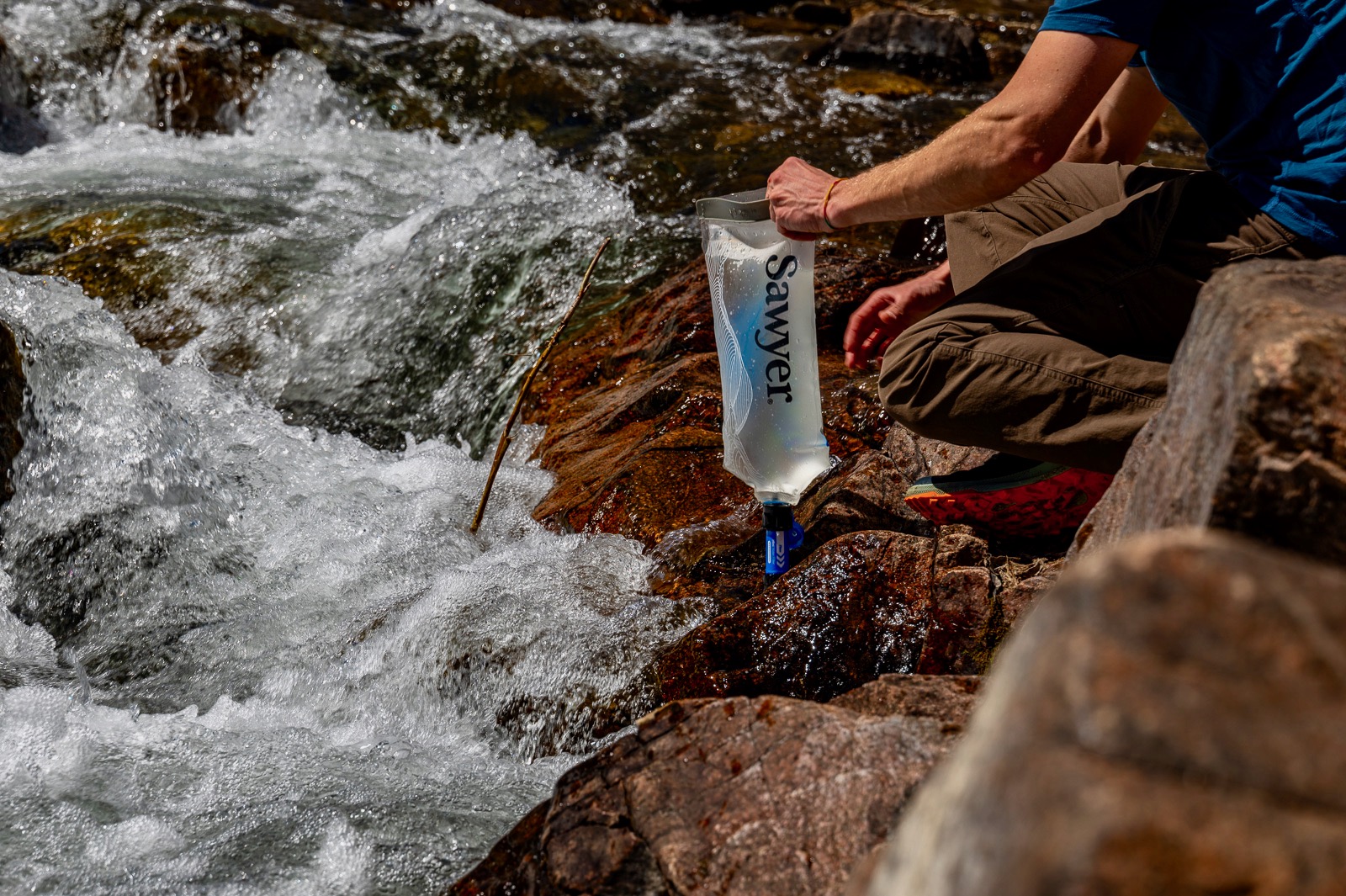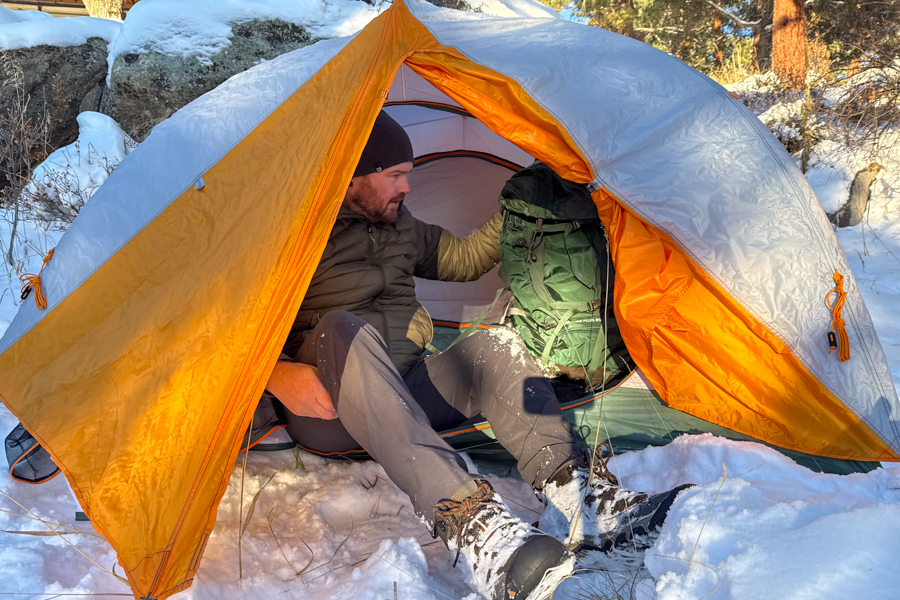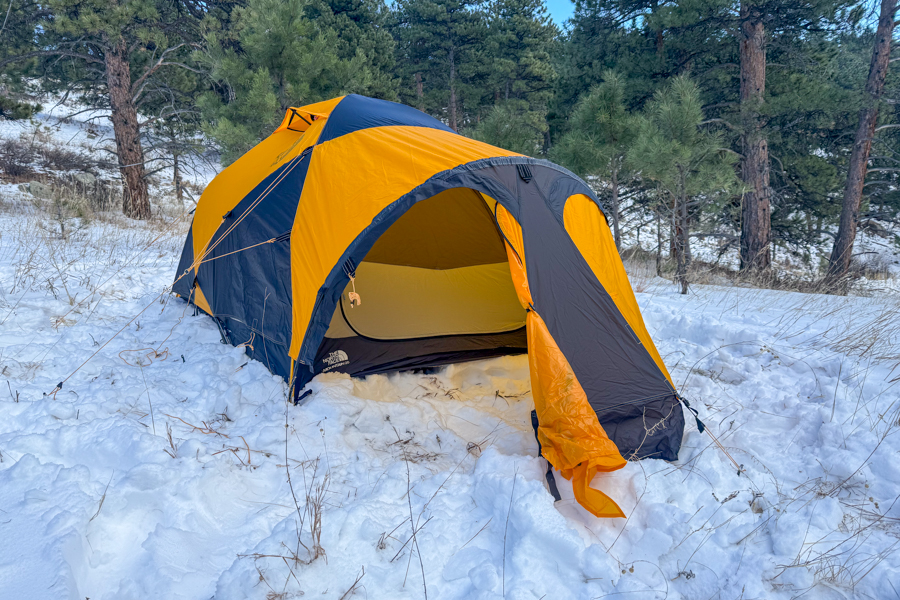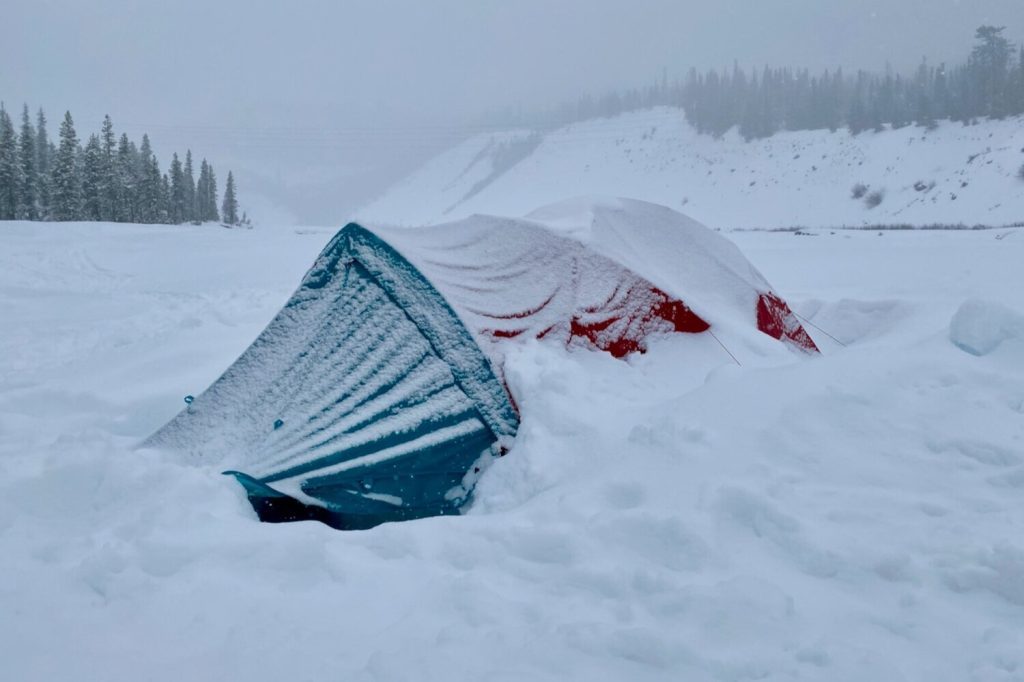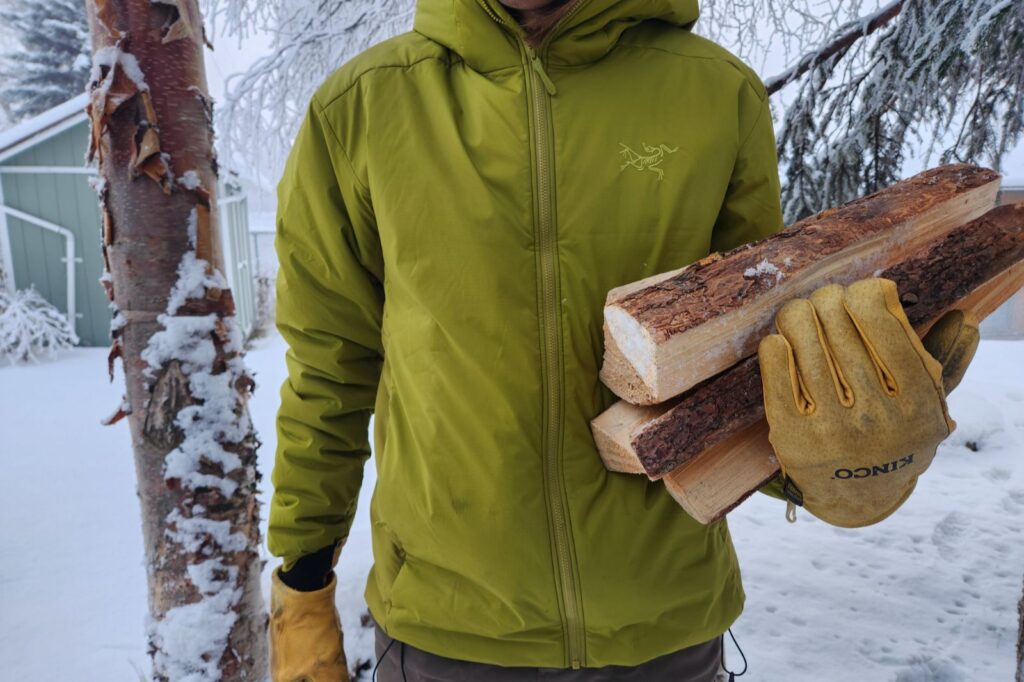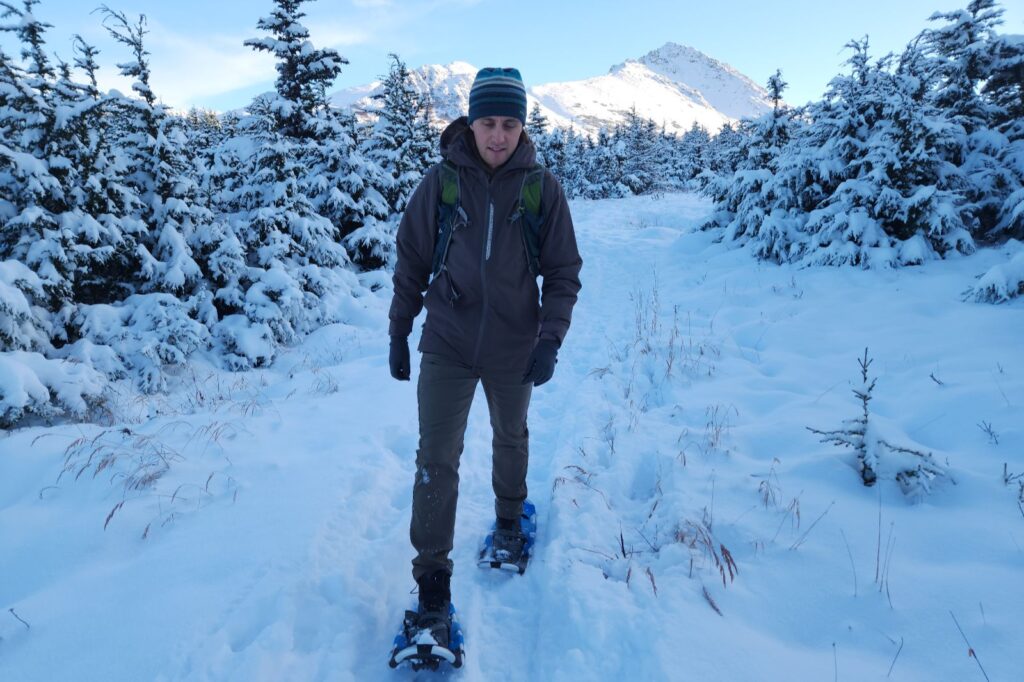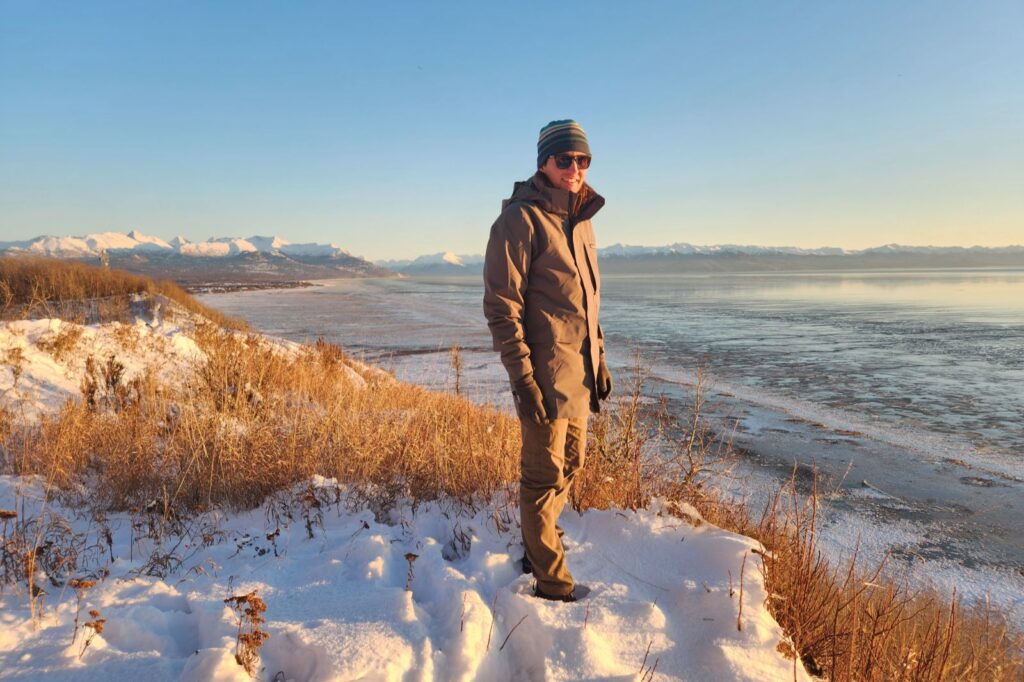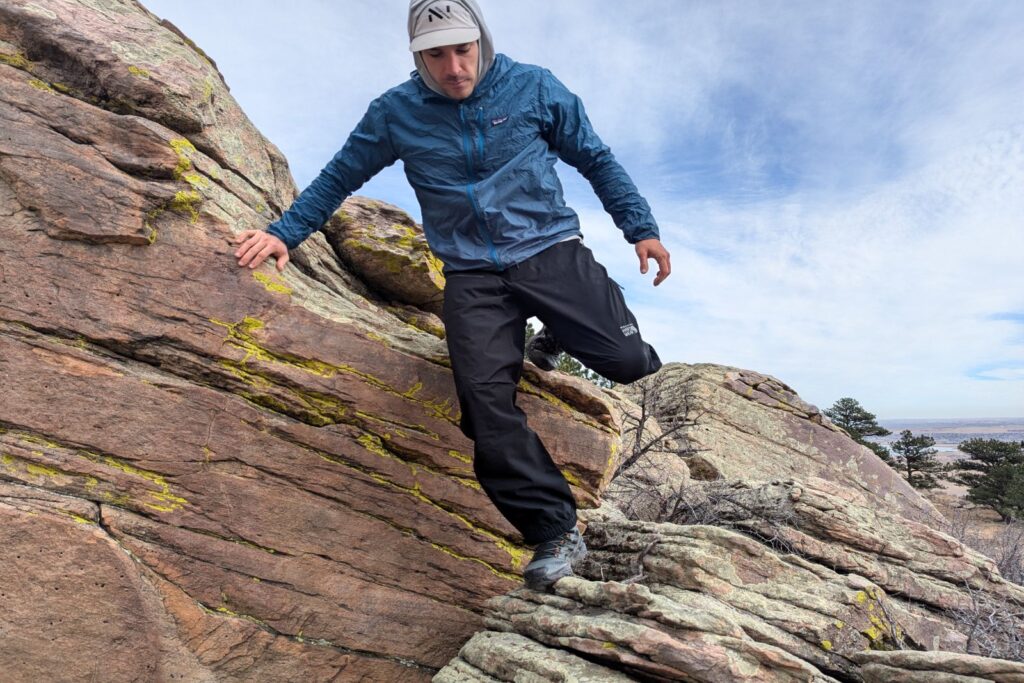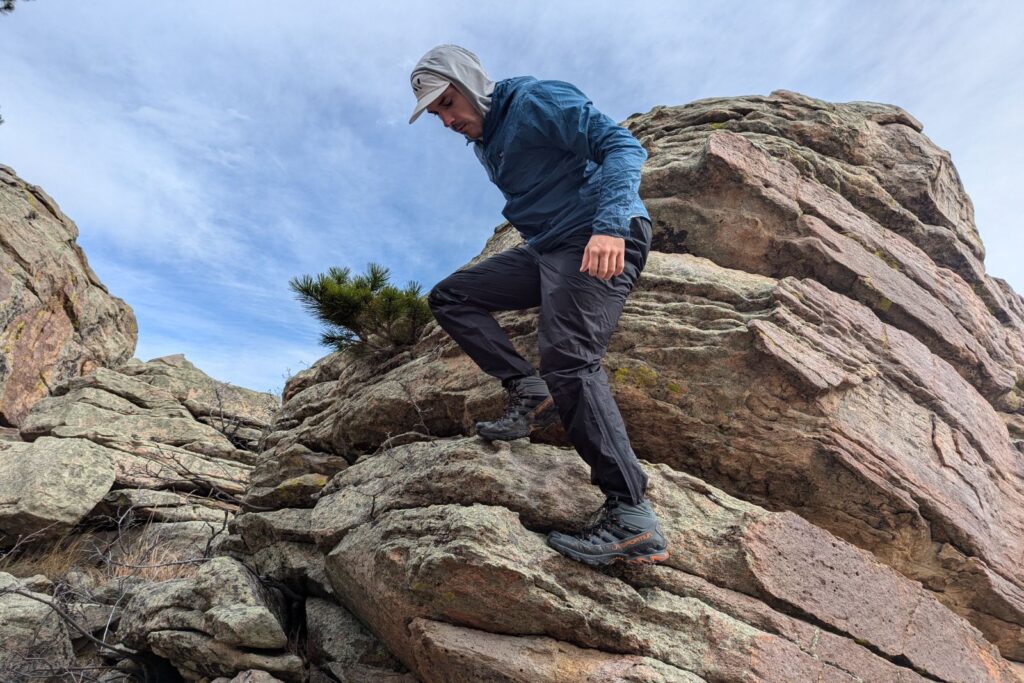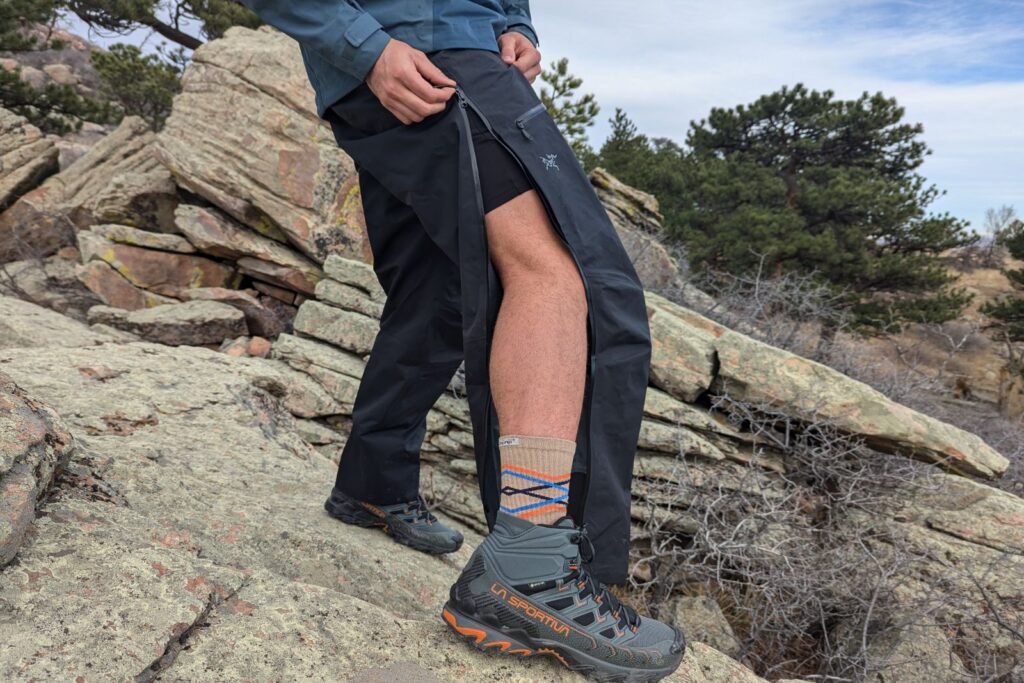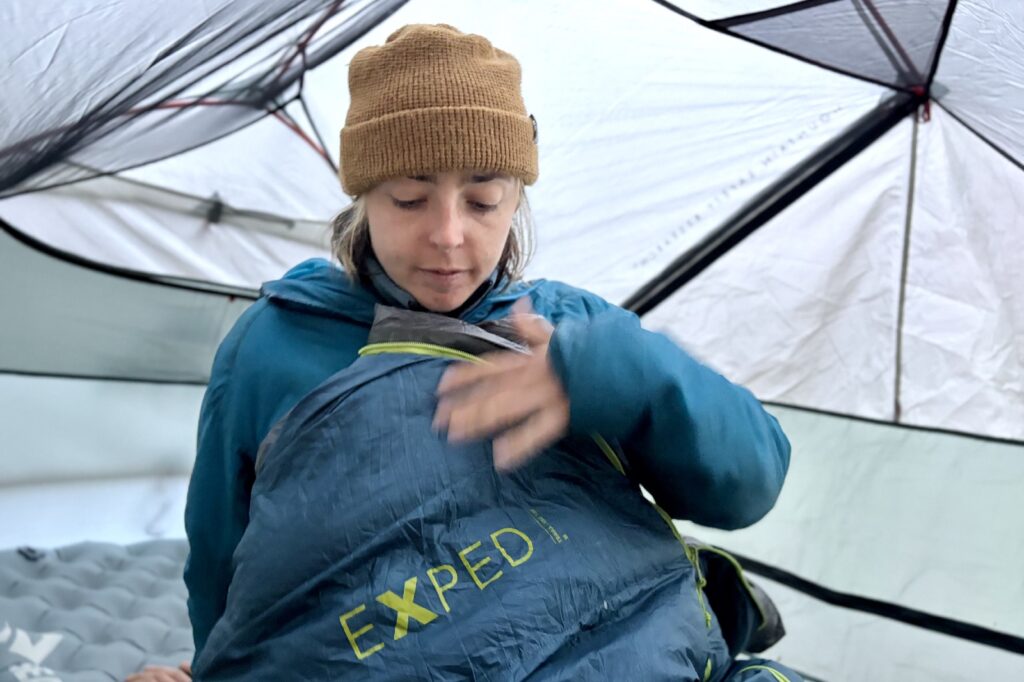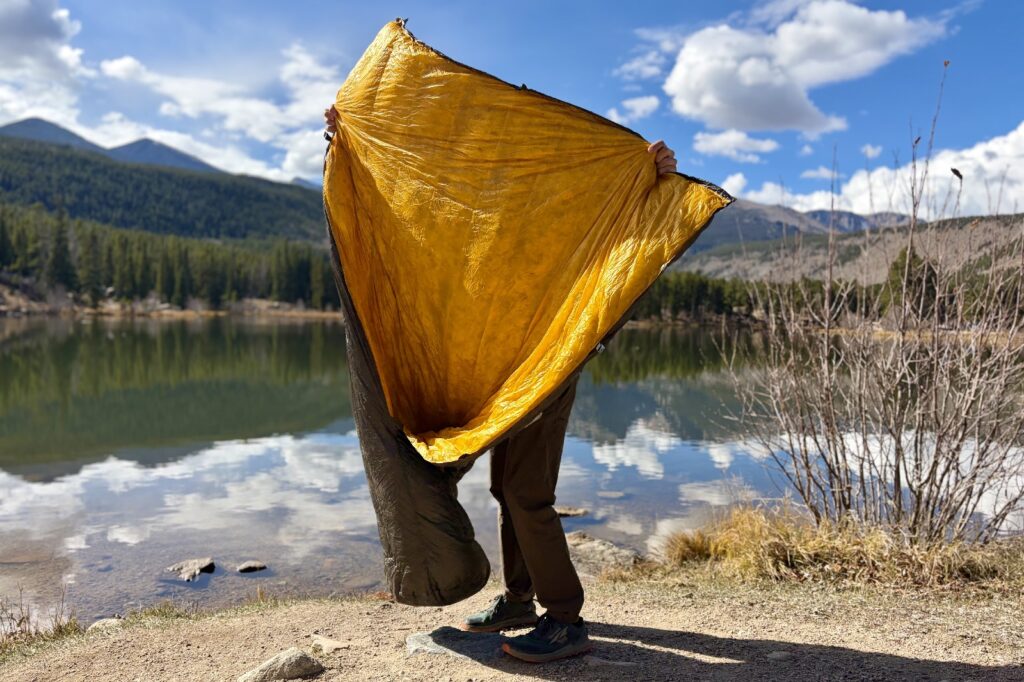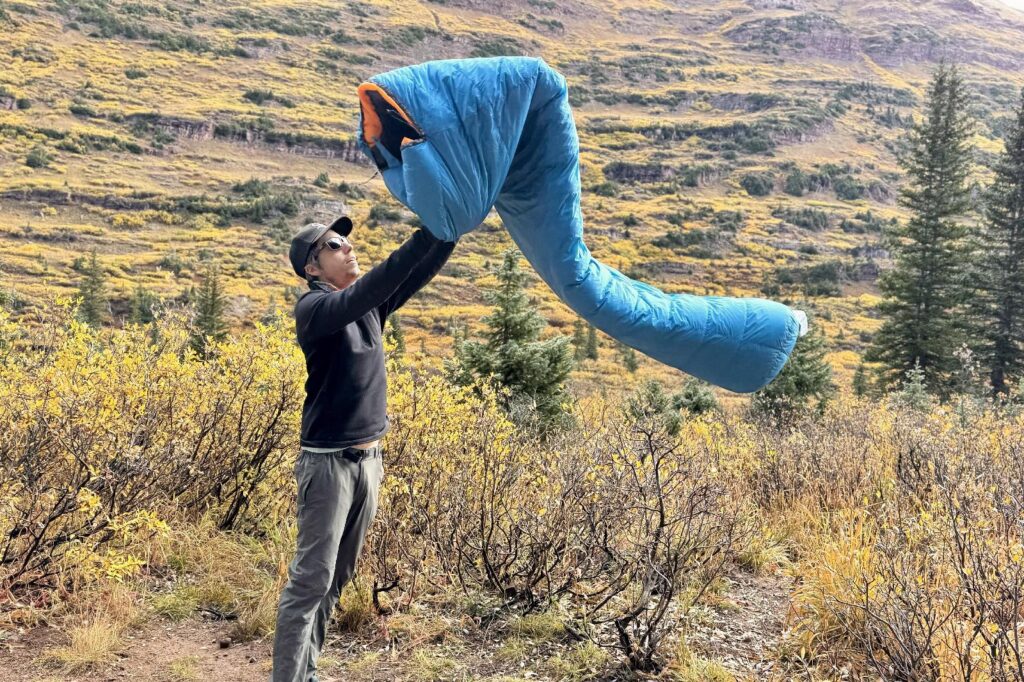
Bottom Line
For ultralight backpackers, the Sawyer Mini is your all-in-one water filter for a variety of setups. Use it as an inline filter in your hydration pack, with a disposable plastic bottle, bladder, or even as a straw directly from the water source. The best part is, it can last for up to 380,000 liters!
Smaller than the palm of your hand, the Mini is an effective, lightweight, and versatile water filter that won’t break the bank. For these reasons, it made the list of our favorite water filters. The only downsides are its lower flow rate and the need to be backflushed frequently.
After testing thousands of miles from the Pacific Crest Trail to the cowpie-infested waters of the Spanish Pyrenees, we are fully confident that the Sawyer Mini is ready for your next backpacking trip.
How We Tested
We tested the Sawyer Mini all over the world in some of the filthiest water sources we could find – from silty, glacial runoff in the PNW to cowpie-infested waters of the Spanish Pyrenees. We also conducted controlled tests at home to establish a baseline.
Quick Specs
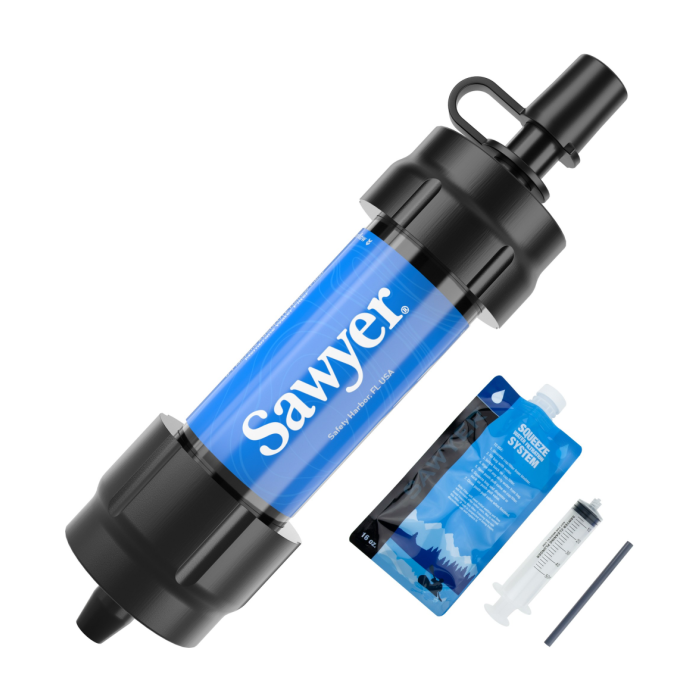
Sawyer Mini
Best Budget Water Filter
CleverHiker Rating: 4.5/5.0
Price: $29
Weight: 2 oz.(including a 32 fl. oz. pouch)
Flow Rate: 1 L/min
Filter Pore Size: .1 microns
Lifetime Volume: 378,000 L
Pros
- Affordable
- Ultralight
- Compact
- Easy to use
- Fits a variety of bottles
Cons
- Included pouches lack durability
- Slower flow rate
- Clogs easily
- Requires syringe to backflush
- Not rated for viruses, international trips
Water Quality
This compact yet powerful filter has a 0.1-micron rating, removing 99.99999% of bacteria, including those nasty gremlins like Giardia and Cryptosporidium that could lurk in wild water sources. It also eliminates 100% of microplastics, which are unfortunately everywhere nowadays. The filter greatly improves the taste by removing the “terroir” flavors of dirt, green matter, and bacteria.
This filter does not contain a carbon component, so it cannot remove heavy metals, simple compounds, or pesticides. However, its ability to eliminate harmful microorganisms has been demonstrated over tens of thousands of miles of backpacking and hiking, with no reported water-borne illnesses when used properly.
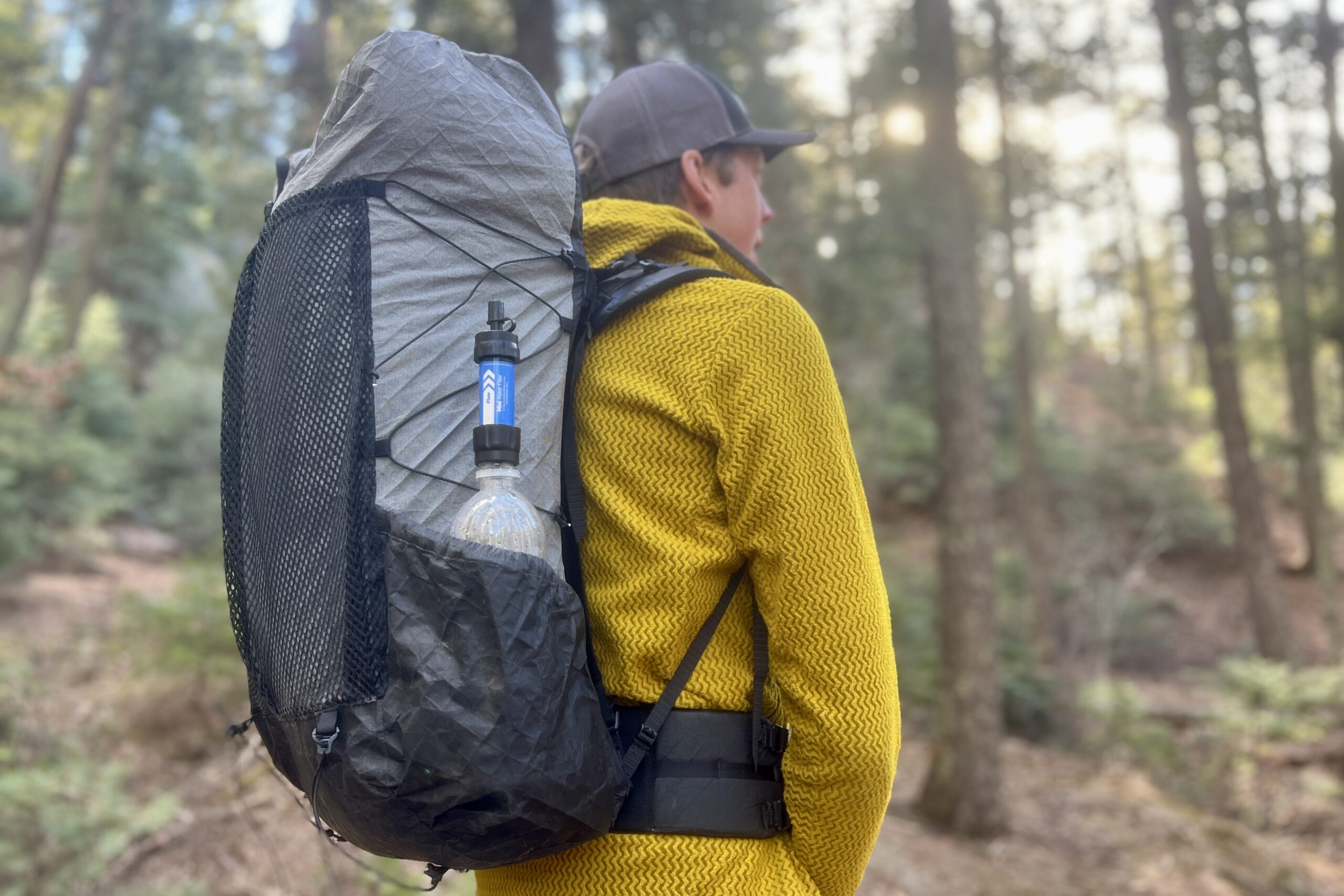
Ease of Use
Use it with a straw directly from the source, splice it into your hydration pack, attach it to a bottle, or use the squeeze bag to fill your containers. The simplicity and versatility of this product are the Sawyer Mini’s greatest strengths.
The Sawyer Mini works with any bottle that has 28mm threads. This includes most soft bladders and disposable plastic bottles. We prefer to use the Sawyer Mini with a Smartwater bottle because of its rigidity and extra durability.
Filling the squeeze bag from a lake, seep, or slow trickle can be frustrating. If you’re at a still water source, hold the bag by the top opening and dip it into the water. After 8-10 scoops, you’ll have a full bag.
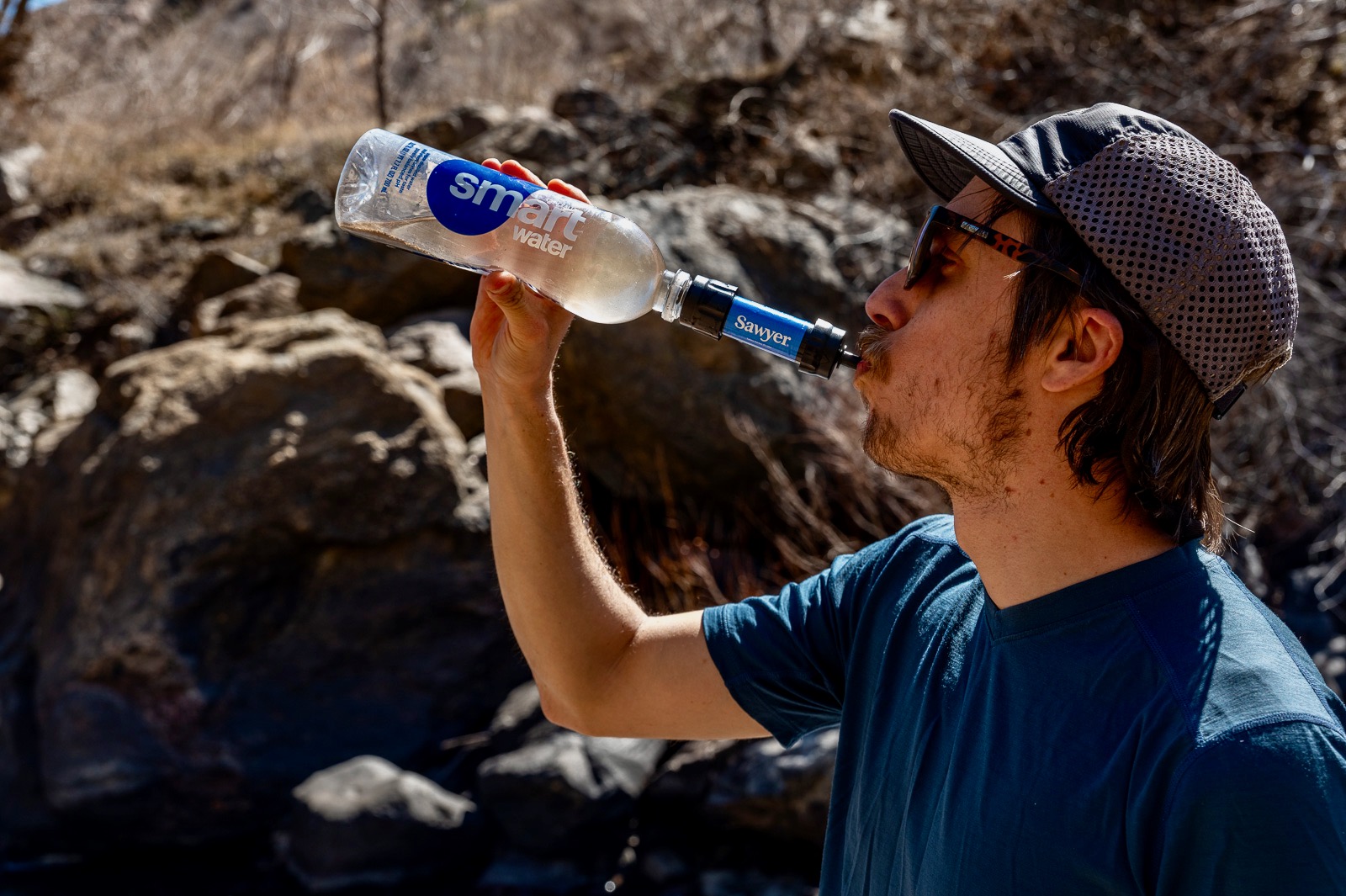
Treatment Time
Because the Sawyer Mini is slightly smaller than the original Sawyer Squeeze, filtering takes a bit longer. Using a bottle or bladder to filter from high-quality water sources will add about 30 seconds. Letting gravity do the work will take roughly 5 minutes longer.
If your main goal is to save time filtering so you can hike more, you might choose the original Sawyer Squeeze. If you’re a quick packer who values every ounce shed, go with the Mini for a little extra pep in your step.
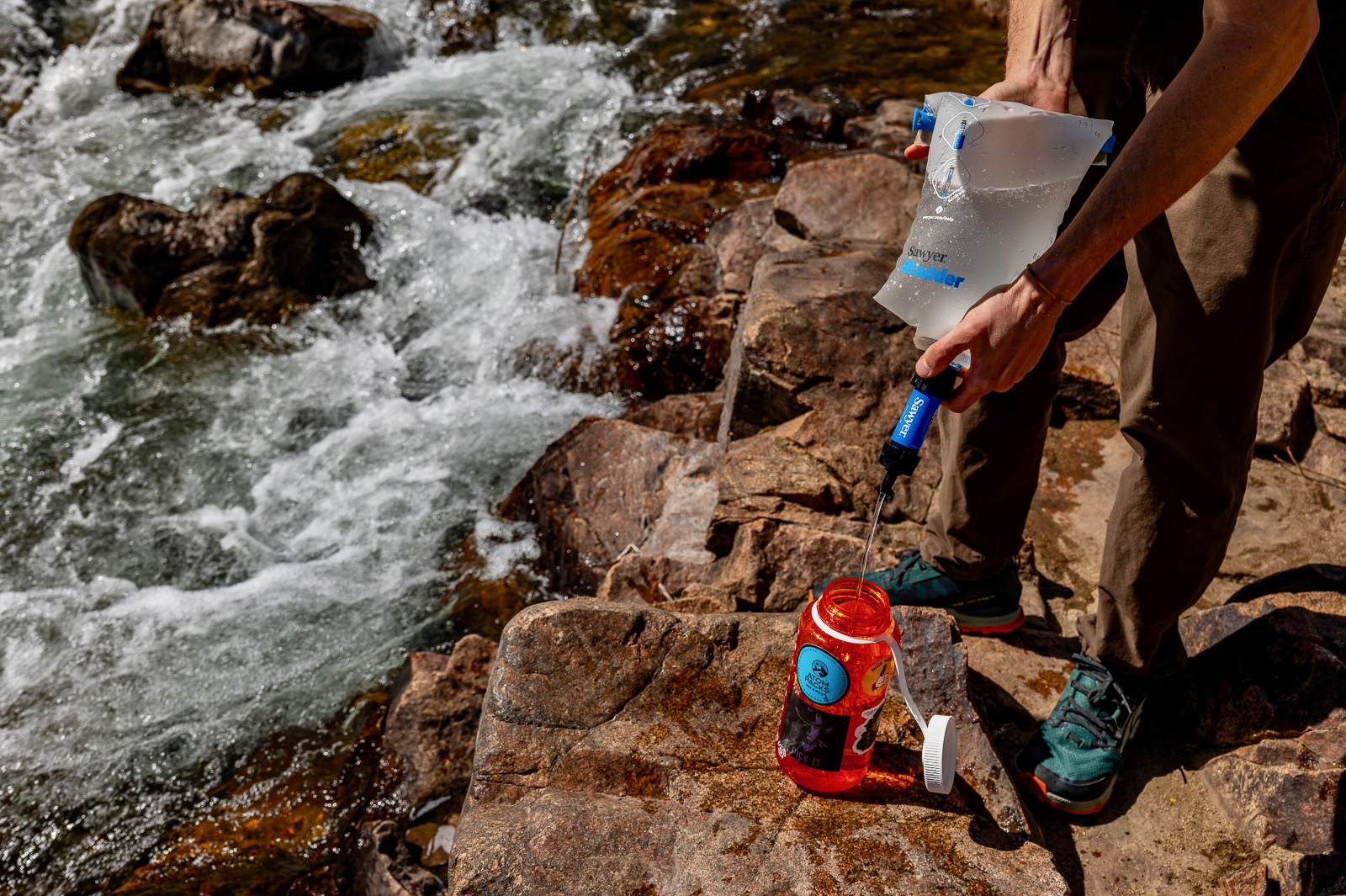
Weight
At two ounces, the Sawyer Mini is about as small and light as water purifiers get. It is a great option for anyone ready to shave off every ounce for the ultimate lightweight backpacking experience.
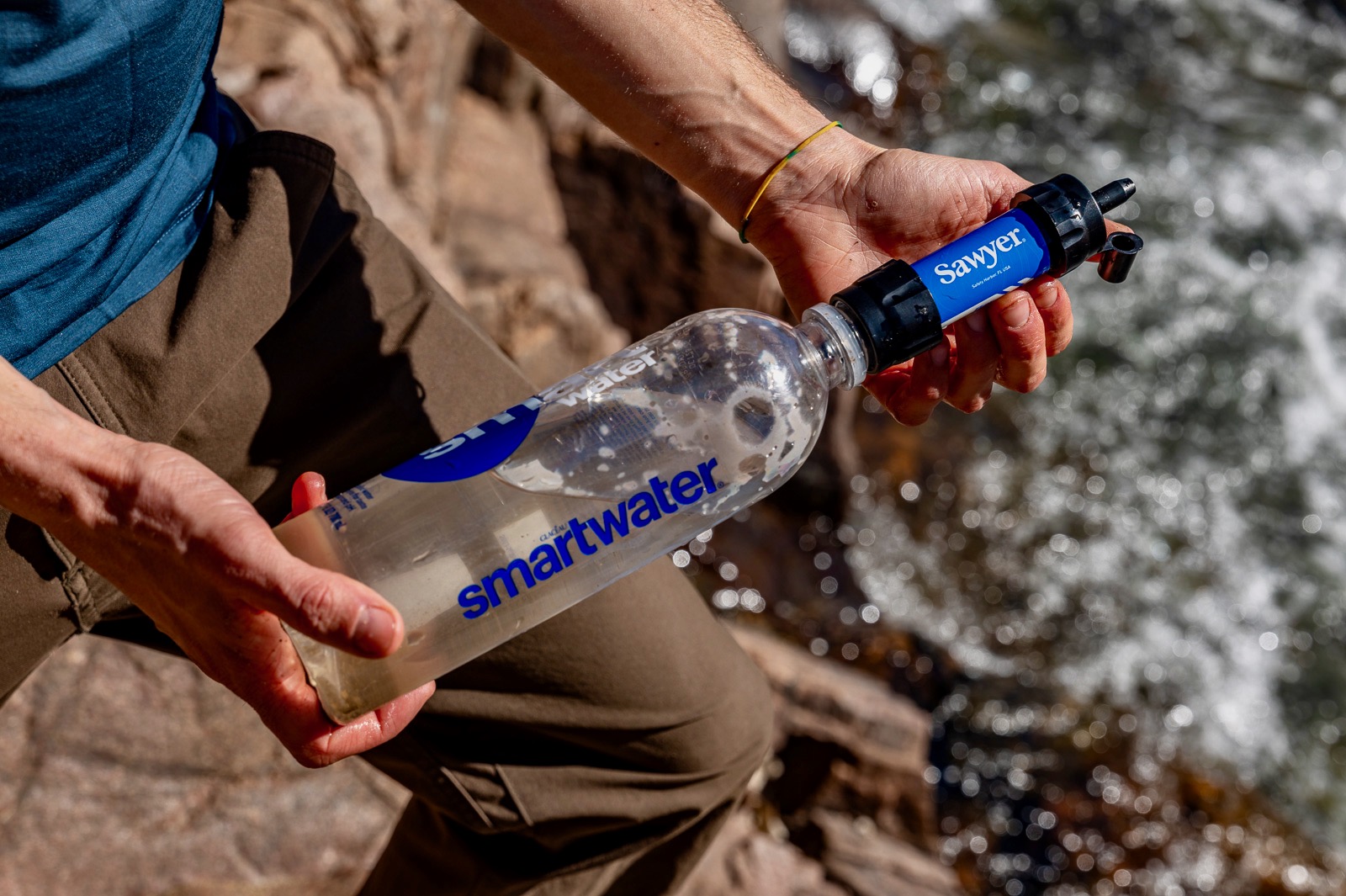
Maintenance & Longevity
Smaller and lighter, the Sawyer Mini requires more frequent back washing than its Sawyer Squeeze counterparts. The sketchier the water, the more frequently you must backwash to keep your Sawyer Mini performing.
We usually backflush at home between our shorter trips and every few days while on a longer trek.
When you buy the Mini, it will come with one 16-ounce pouch, which is large enough for your trail runs but not large enough for your backpacking trips. They are also notorious for blowing a seam, so pick up some spare pouches. We recommend a 64-oz bag.
Don’t let your Mini filter freeze. If it freezes, the delicate hollow fibers inside can crack, making it useless. Unfortunately, there’s no way to know if the filter no longer works, so it’s best to stay safe. We usually put it in a Ziploc bag next to our electronics inside our sleeping bag at night to prevent it from freezing.
Even though the Sawyer Mini needs regular backflushing, it can last for over 380,000 liters if maintained properly, making it an incredibly worthwhile investment.
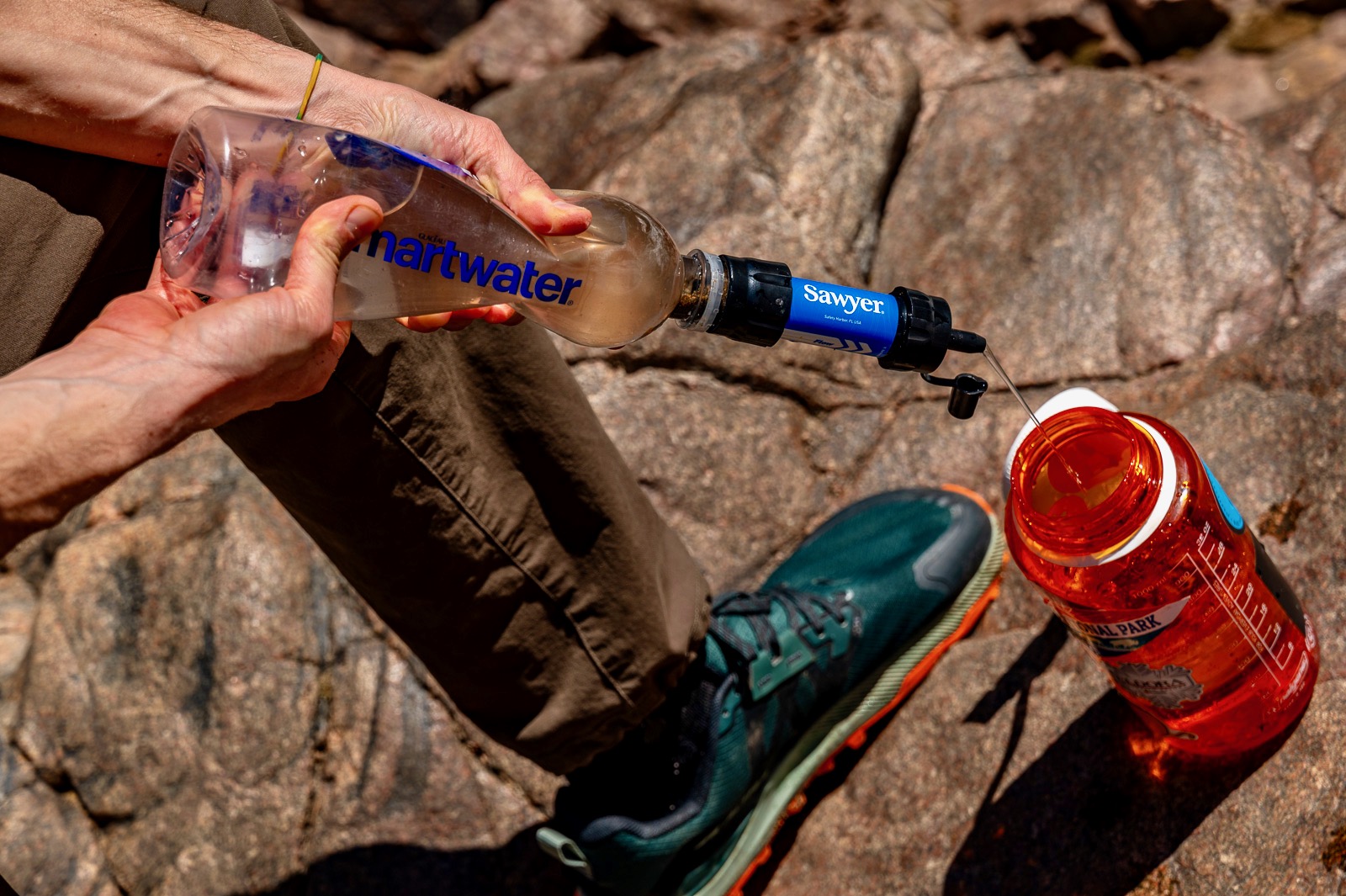
Should You Buy the Sawyer Mini?
The Sawyer Mini is perfect for those who want a lightweight, high-quality filter with minimal cost. Weighing just two ounces, this filter is easy to carry and adaptable. It can be used in many ways, whether you prefer to connect it to disposable plastic bottles, bladders, inline in your hydration pack, or simply let gravity do the work. The Mini offers great value, lasting up to nearly half a million liters of filtration.
However, it is worth noting that it clogs faster than other models, so if you are backpacking in an area with especially silty or still water, you should look elsewhere for a primary filter. That said, as a backup or on trails with clearer sources, this is almost a no-brainer choice.
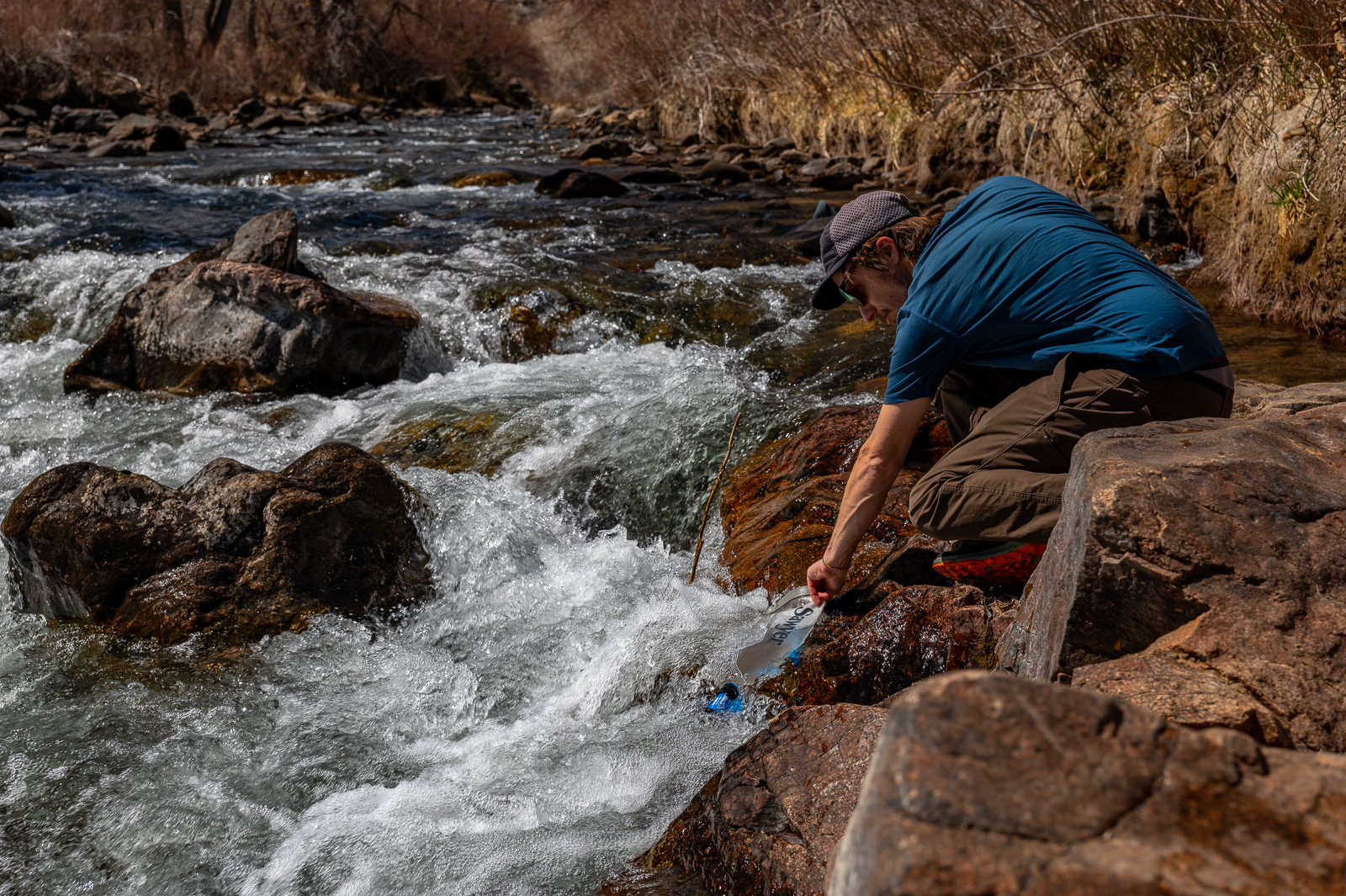
What Other Water Filters Should You Consider?
Sawyer Squeeze Review: Sawyer’s trusted flagship squeeze filter model, this version is slightly larger, faster, and more durable. It also requires less frequent backwashing, which is why we prefer the original Squeeze for longer trips.
Katadyn BeFree Review: The BeFree’s shake-to-clean feature usually provides a faster flow rate and simpler cleaning process. It uses a soft flask for water collection, which we’ve found to be more durable than Sawyer’s squeeze pouches. Some CleverHiker gear analysts report that the BeFree produces better-tasting water. However, it has a shorter overall lifespan and needs to be replaced sooner than Sawyer products.
LifeStraw Peak Straw Review: The LifeStraw is similar to the Sawyer Mini because it can be used as a straw, squeeze filter, or gravity filter. However, it has a shorter lifespan and replaces the inline feature with syringe-free backflushing for field use.
